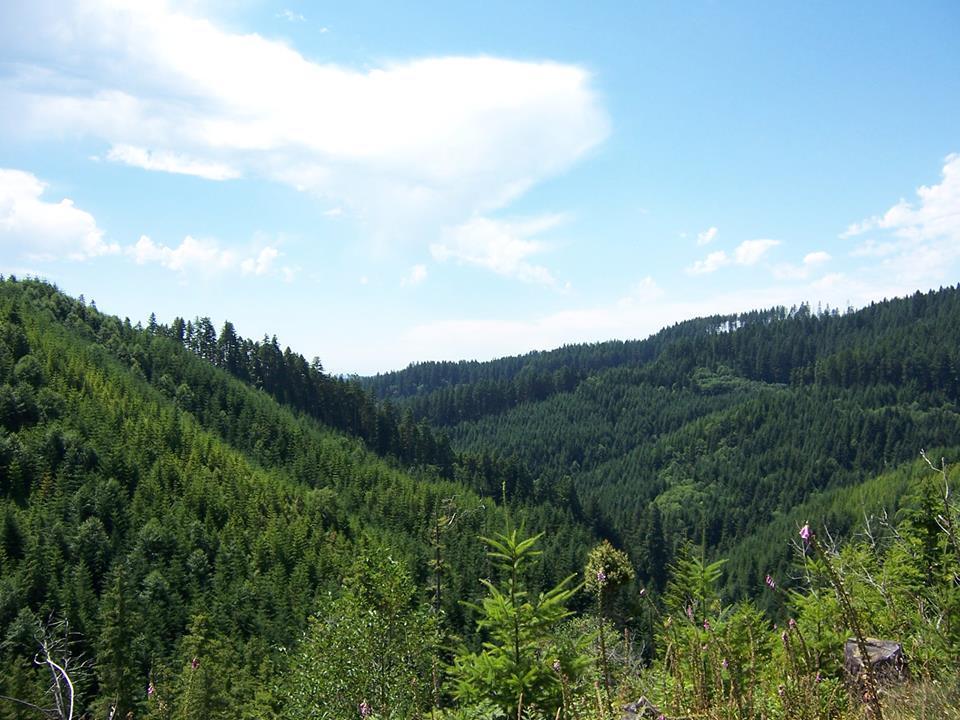(Salem, OR) — Governor Kate Brown kicked off the first in a series of negotiation sessions this month as part of a groundbreaking agreement between forestry representatives, conservation leaders, and fishing organizations that aims to propose new protections for sensitive aquatic species on over 10 million acres of private forestland in Oregon, which could be formalized in a statewide Habitat Conservation Plan.
“In the past year––despite the disruptions of a global pandemic and historic wildfire devastation which made face-to-face meetings very difficult––this group has made steady progress in establishing common ground,” said Governor Kate Brown. “Together, we can build a future for Oregon with healthy forests, fish, and wildlife and economic growth for our forest industry and rural communities at the same time.”
In February of last year, Governor Brown brokered an agreement between 13 conservation and fishing groups and 13 timber and forest products entities to abandon a costly and divisive ballot initiative fight in exchange for proactive legislation supporting collaboratively developed changes to forest practices. This agreement, called the Private Forest Accord, led to bi-partisan legislation that passed with overwhelming majorities in June 2020. The legislation codified the historic agreement, funded the negotiating process now underway, and enacted a set of significant reforms to the Forest Practices Act, some of which went into effect January 1. These new laws restrict helicopter applications of pesticides on forestland within 300 feet of homes, schools and drinking water, and created a new, first-in-the-nation real-time neighbor notification and reporting requirement.
“Oregon’s forests are a precious resource that provide extraordinary beauty and recreational opportunities and a source of good, year-round employment and economic opportunity for small, family-owned businesses,” said Heath Curtiss, representing Hampton Lumber. “Our goal is to ensure a vibrant and sustainable Oregon forest products industry, now and into the future, while avoiding the tragic community losses we saw in rural Oregon when federal forest harvest plummeted. It will be delicate work, but if we focus on good science, specific problem statements, and the least burdensome measures to help remedy those problems, we’ll get there. It will require compromise on all sides, and a recognition that forestry is only one piece of the puzzle.”
“Oregon’s fish, wildlife, and water resources face serious pressure from the human footprint on forests and the growing effects of climate change, but our policies have fallen too far behind the science,” said Bob Van Dyk, representing Wild Salmon Center. “This process is a chance to ensure a brighter future for vital public resources through improved forest practices while also providing more certainty to the regulated community.”
“Oregon’s forest lands are critical to a healthy and vibrant economy in Oregon,” said Chrysten Lambert of Trout Unlimited. “They are sources of drinking water for many communities, as well as critical habitat for the salmon and steelhead that our large commercial and recreational fishing industries depend on. I look forward to partnering with leaders in the timber industry to design new forest practice standards that can sustain both our timber industry as well as healthy, abundant fisheries and communities.”
“Oregon’s Forest Practices Act has always been based on science and it is my anticipation, as both sides have already agreed, science will drive this process,” said Jim James, representing Oregon Small Woodlands Association. “A successful outcome is extremely important to Oregon’s family forest owner community, who play a unique and proud role in Oregon’s wood products industry. I begin this process with an open mind, a strong appreciation for the current rules, and a willingness to listen and work to develop a science-driven Habitat Conservation Plan.”
On January 12, the parties began a series of meetings in which they will discuss proposed changes to forest practices and pursue securing a statewide Habitat Conservation Plan from federal agencies for threatened and endangered species, which would provide more regulatory certainty for landowners and long-term conservation benefits to designated wildlife species
The Governor’s office worked with all 26 signatories to identify the negotiating teams and appointed experienced mediator Peter Koehler.
The conservation and fishing side representatives are Bob Van Dyk (Wild Salmon Center), Sean Stevens (Oregon Wild), Chrysten Lambert (Trout Unlimited), Bob Sallinger (Portland Audubon), Joseph Vaile (Klamath Siskiyou Wildlands Center), and Dr. Kelly Burnett (Aquatic Scientist).
For the timber sector the representatives are Adrian Miller (Rayonier), Diane Meyers (Weyerhaeuser), Cameron Krauss (Seneca Sawmill Company), Heath Curtiss (Hampton Lumber), Eric Geyer (Roseburg Forest Products), Jim James (Oregon Small Woodlands Association).
The parties will work intensively over 2021 with the goal of an agreement to formalize in the 2022 legislative session.


